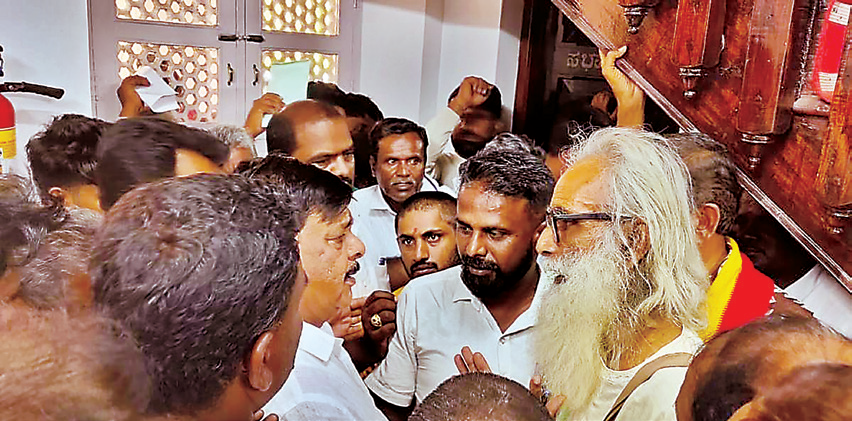
Hampi's heritage temple damaged before CM visit, ASI issues notice
Maqsood Maniyar | NT
Bengaluru / Vijayanagar: Chief Minister Siddaramaiah found himself in the middle of yet another controversy as his visit to Hampi’s Virupaksha temple a couple of weeks ago was accompanied by damage to the United Nations Educational and Scientific Cultural Organisation (UNESCO) heritage monument.
It has been learned that organisers of the Kannada Jyothi programme at the Vijayanagar district temple – attended by Siddaramaiah on November 2 – drilled a pillar of the temple to nail it and then hang a Karnataka flag on it.
This was followed by Archaeological Survey of India (ASI) issuing a notice to the Endowments Department for failing to prevent the damage caused to the structure.
ASI pointed out that the monument was also centrally protected and that any modification that the Endowment Department under the State government wanted to make to the temple had to be approved by them.
Otherwise, it would count as a violation of the Ancient Monuments and Archaeological Sites and Remains (AMASR) (Amendment and Validation) Act.
“You closed the northern exit of the Virupaksha Temple Garbhagruha by barricading the steps, and a separate way was created for the devotees. As such, your office has not taken any permission to close the exit, and also, your office has fixed MS hollow pipes in between pillars by making holes and inserting the iron piece in the decorative pillars, which is a clear violation of section 30 of the AMASR Act,” ASI told the Endowment department.
The temple is managed by the Archeology Department. Moreover, ASI alleged that the temple pillar was grilled and pipes were installed to better regulate the flow of devotees when CM Siddaramaiah was visiting.
The notice also warned that the erring party can be imprisoned for two years and fined Rs 1 lakh for defacing the monument under the AMASR Act. The temple is said to have been in existence since the seventh century.
However, Vijayanagara king Krishnadevaraya made major additions to the structure in 1510 to mark his accession.
 English daily published in Bengaluru & Doha
English daily published in Bengaluru & Doha






